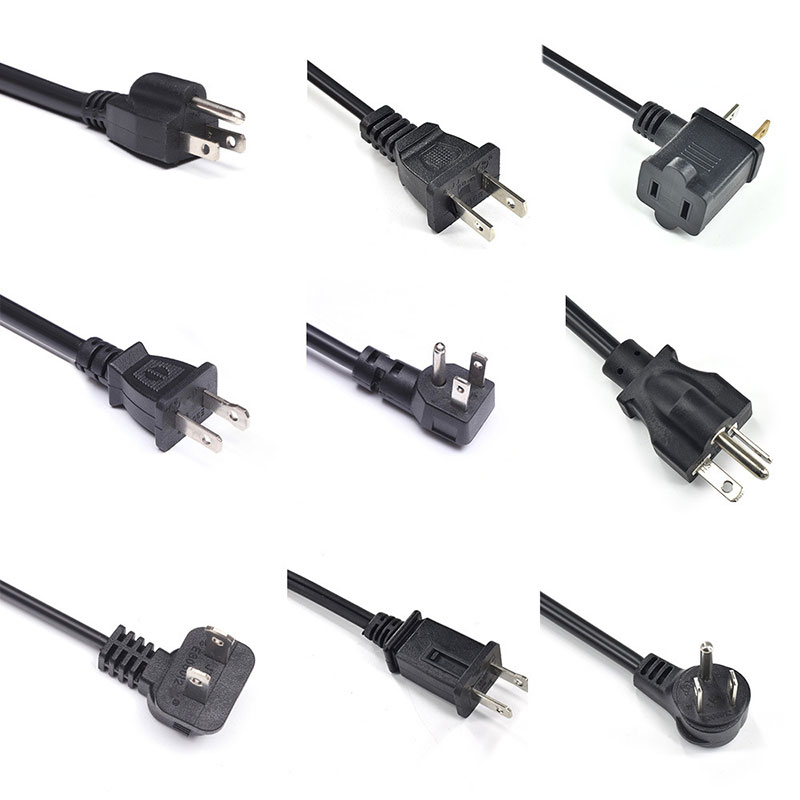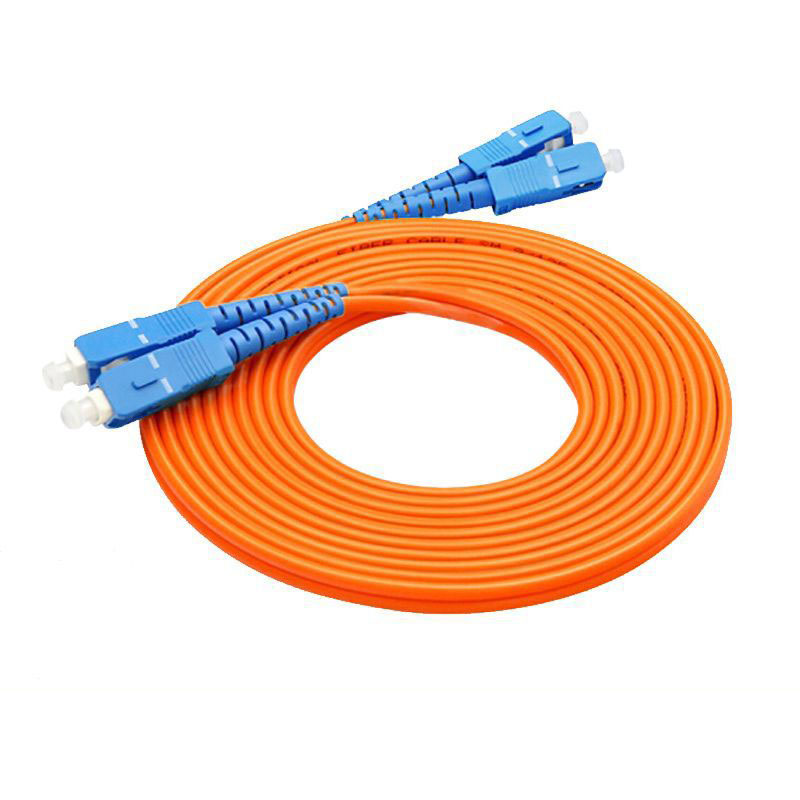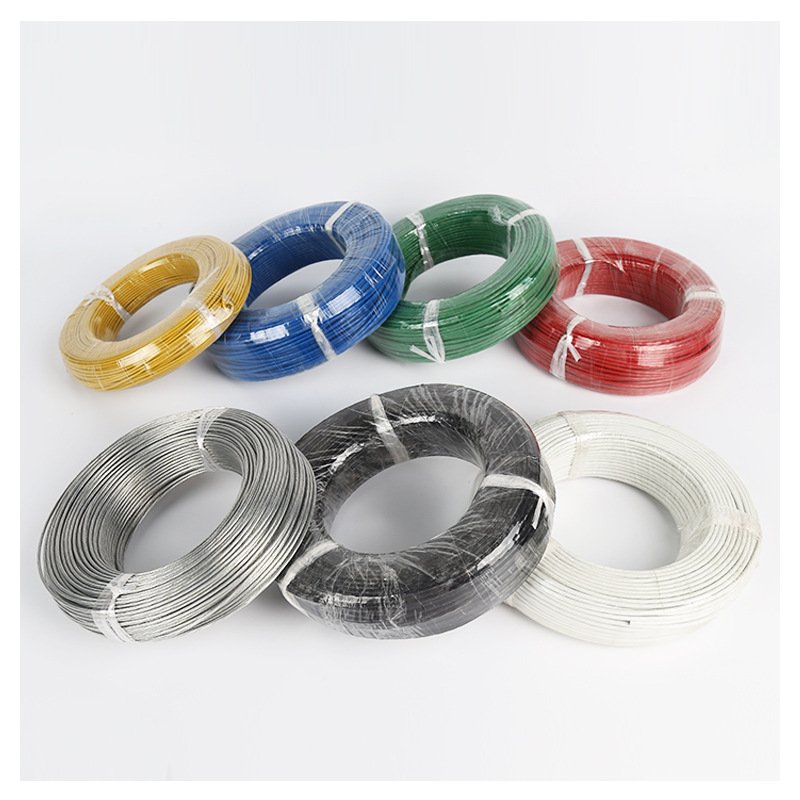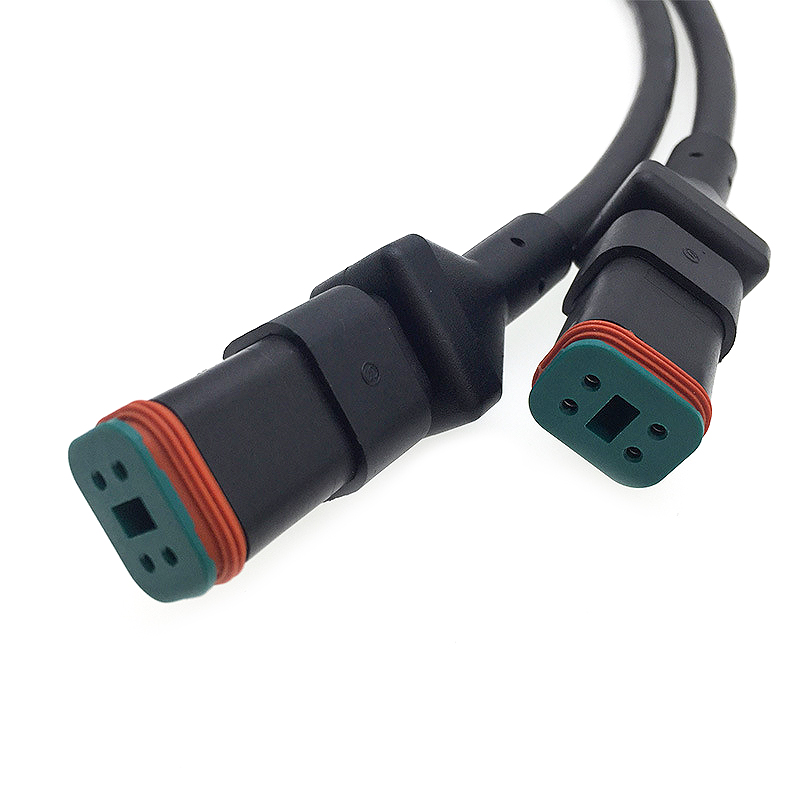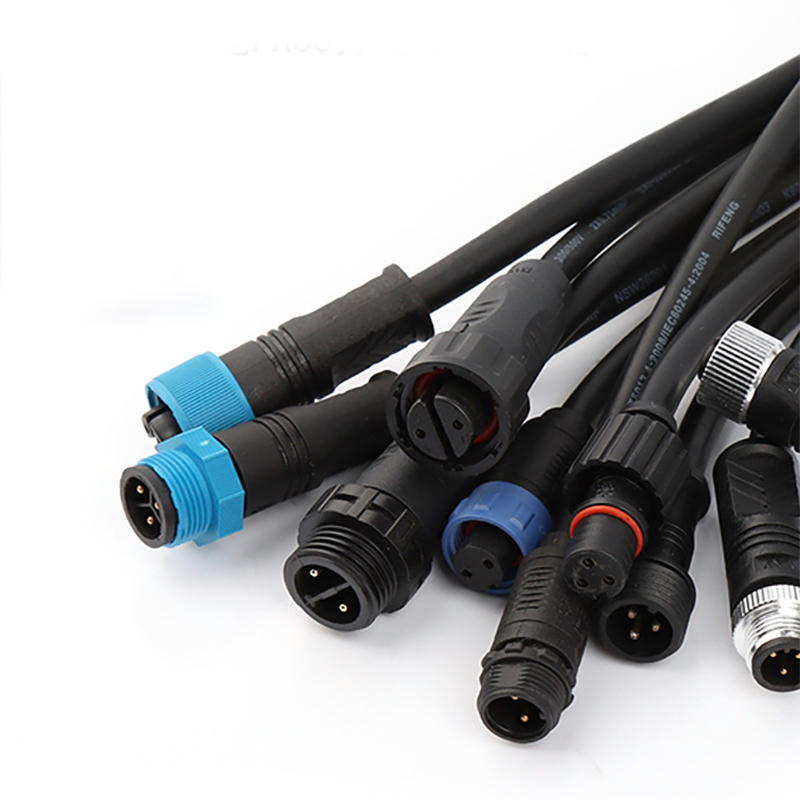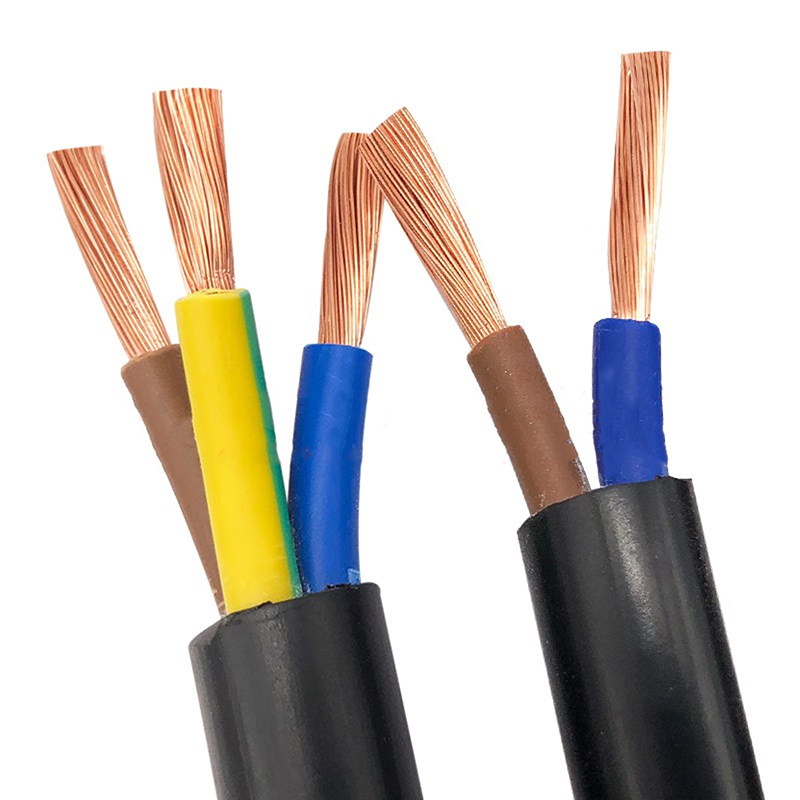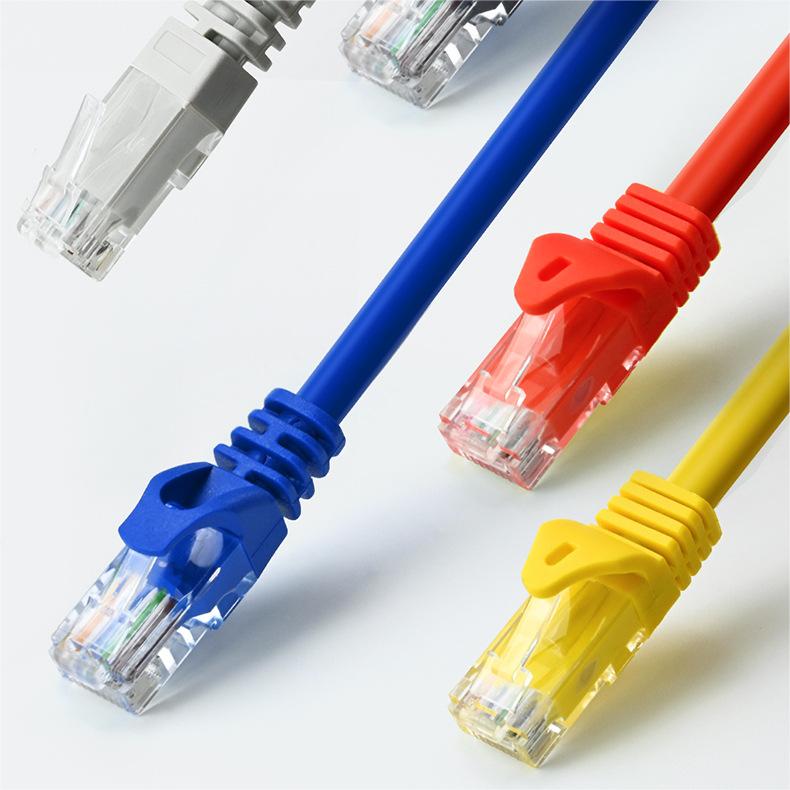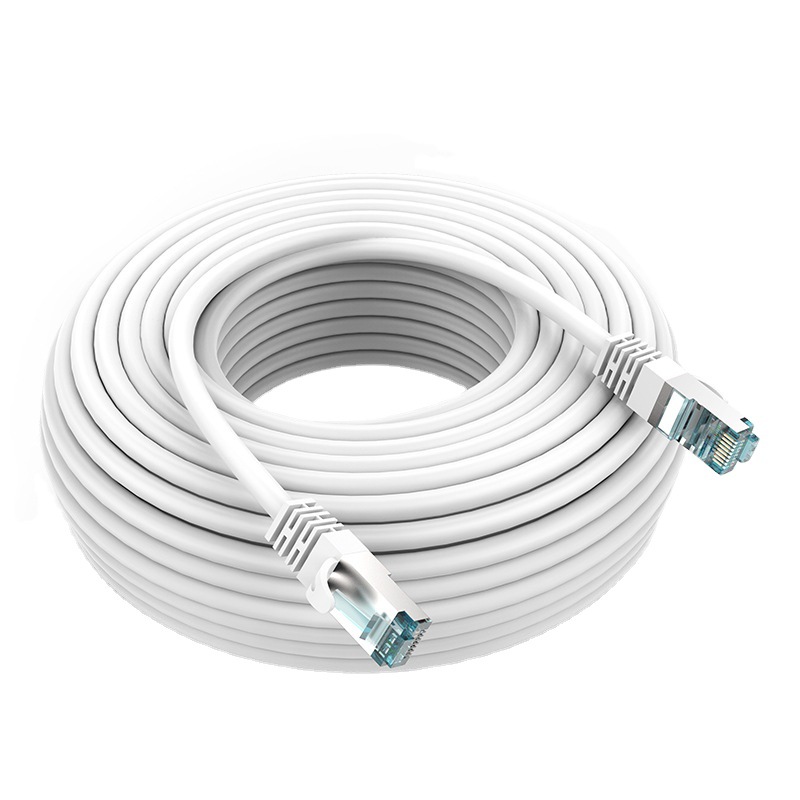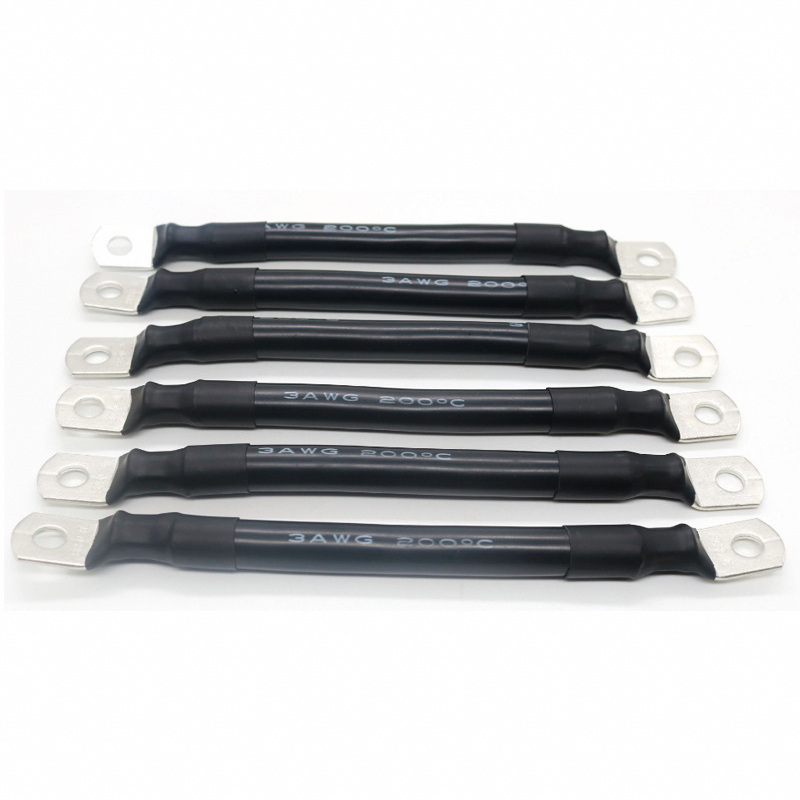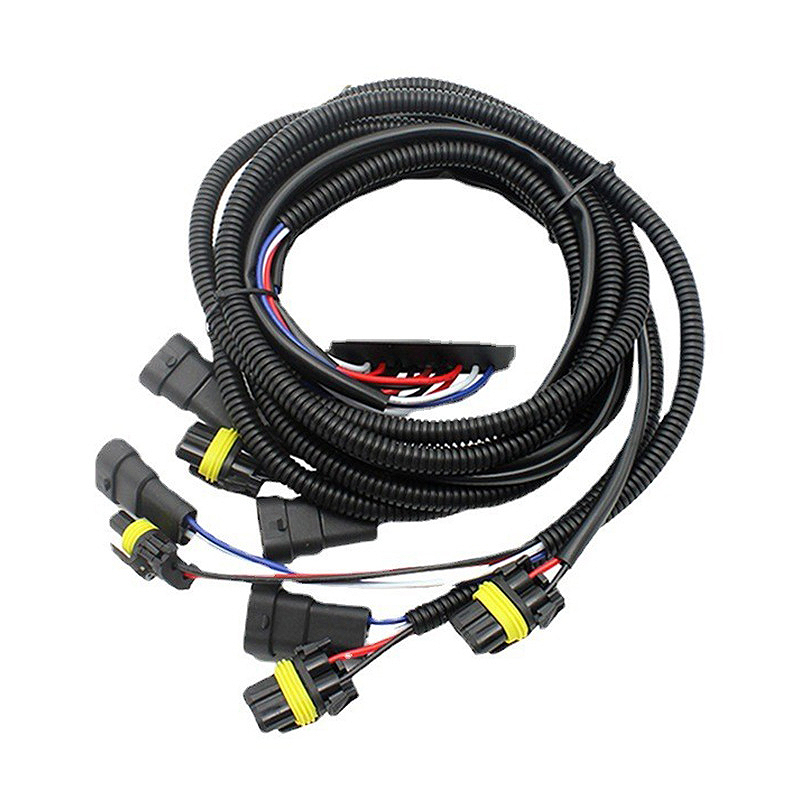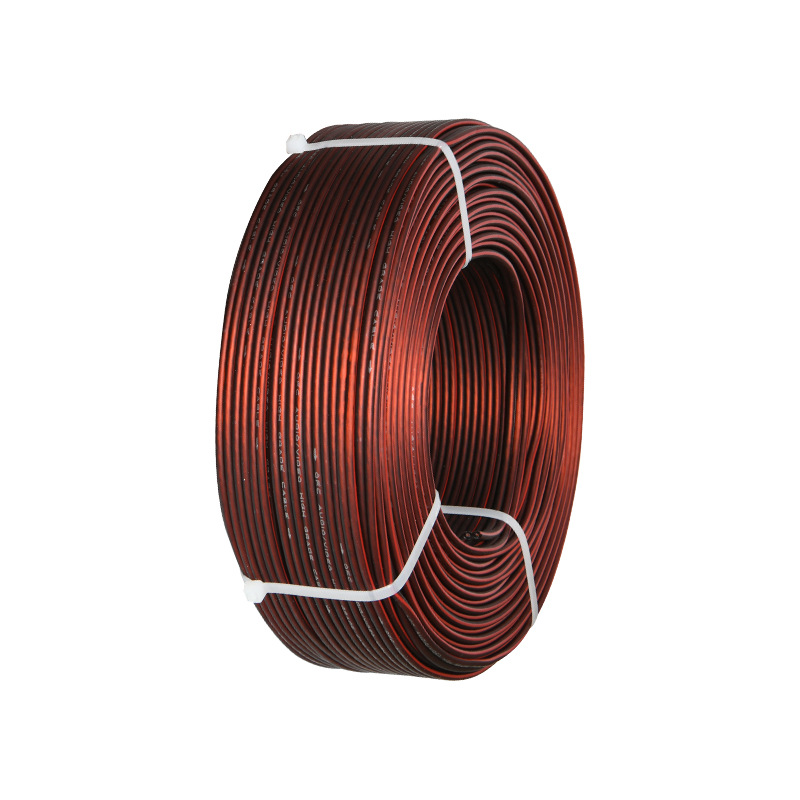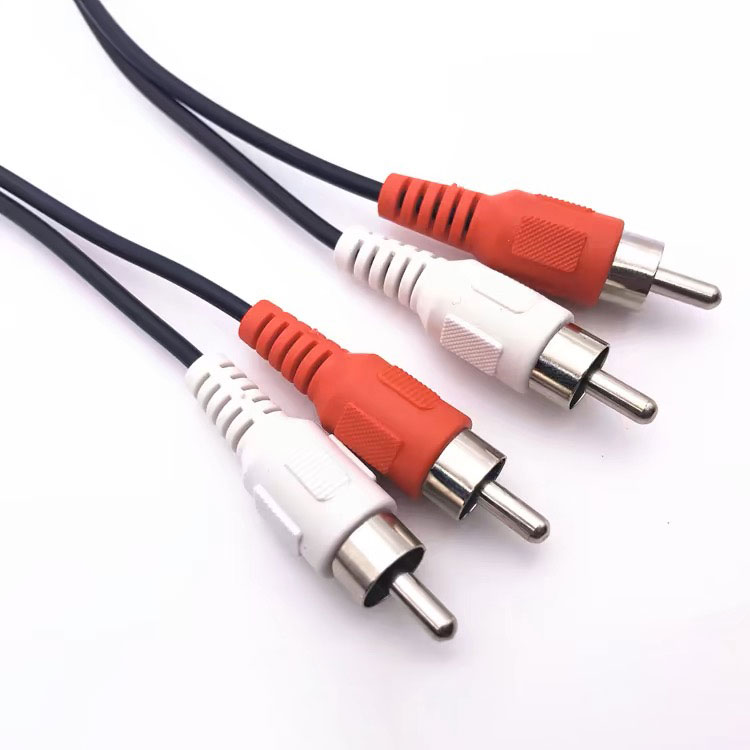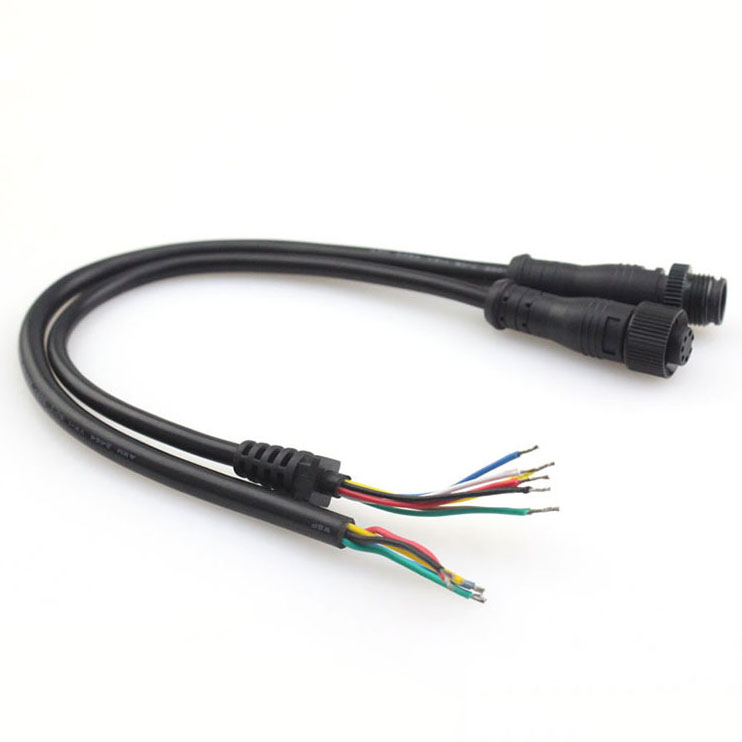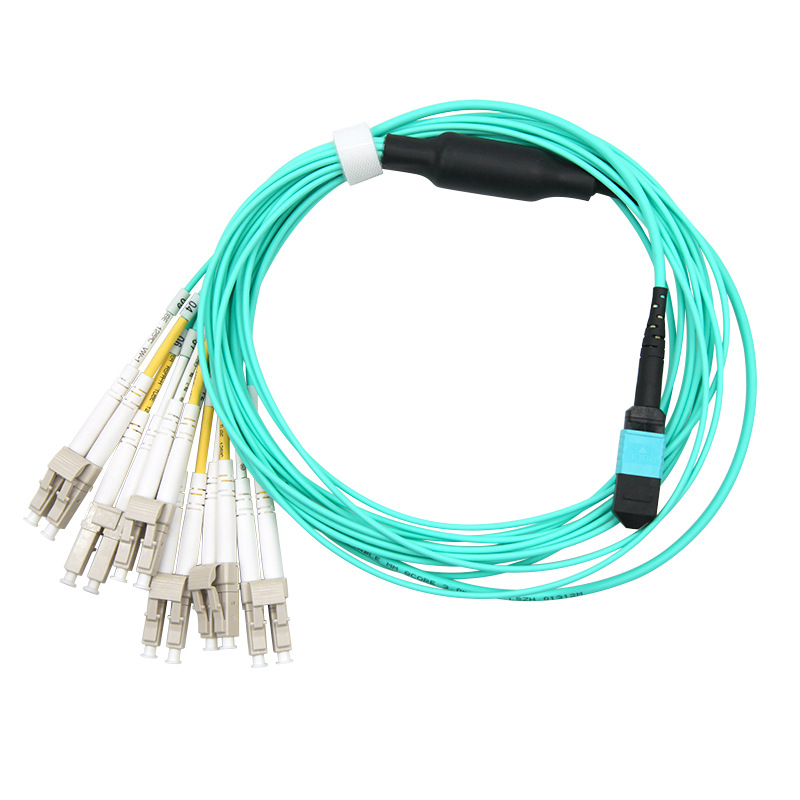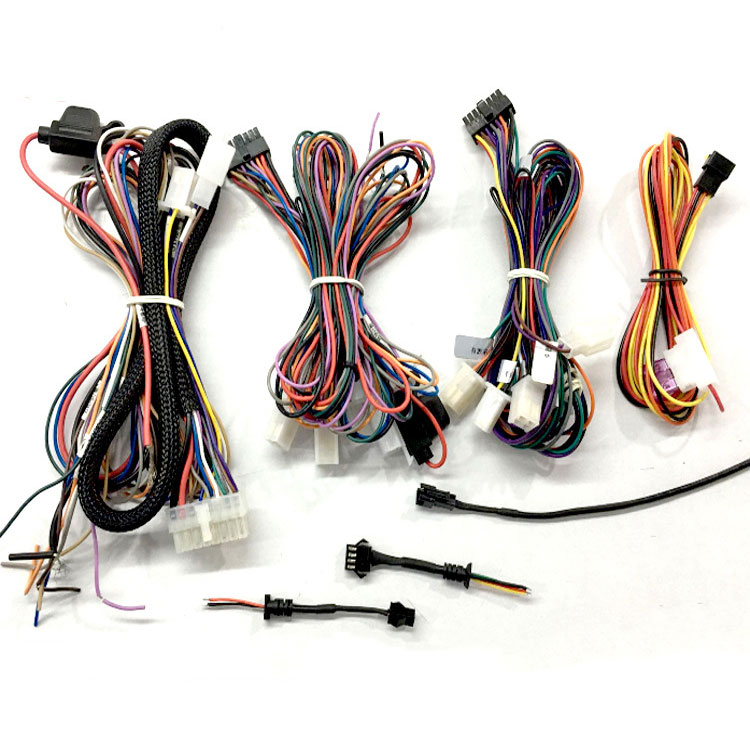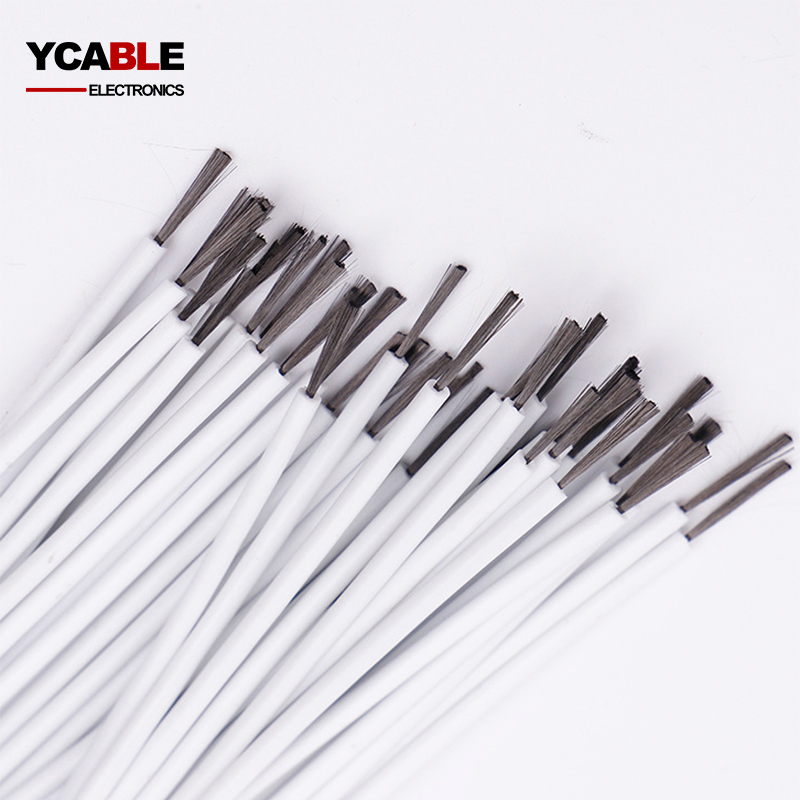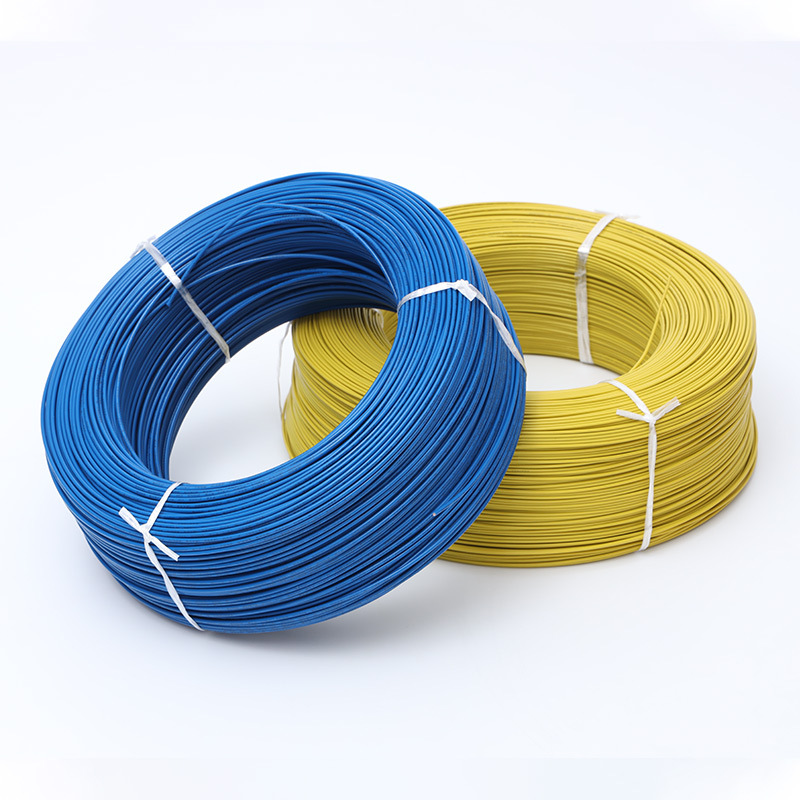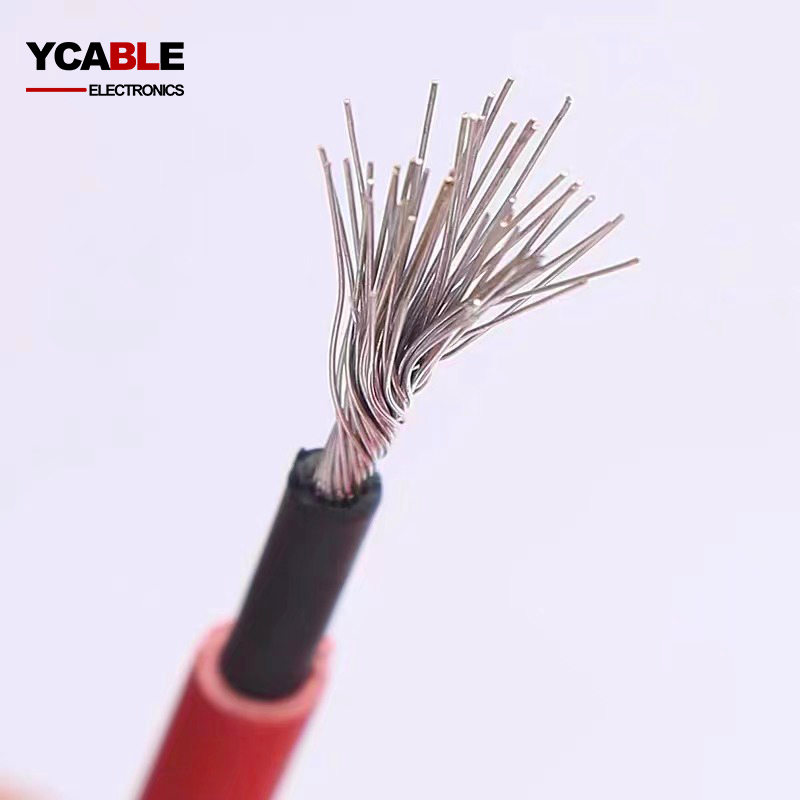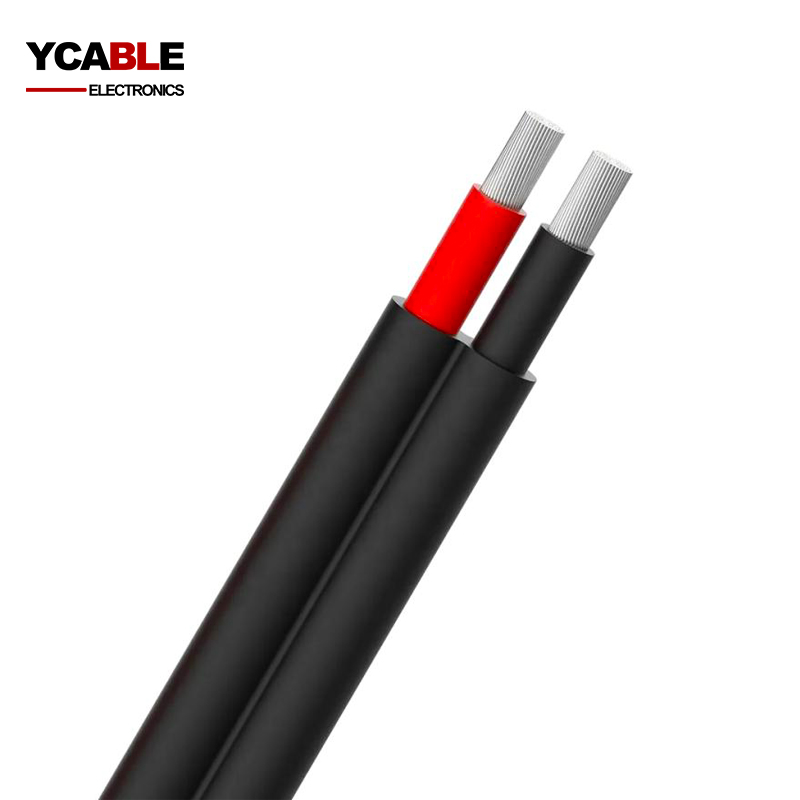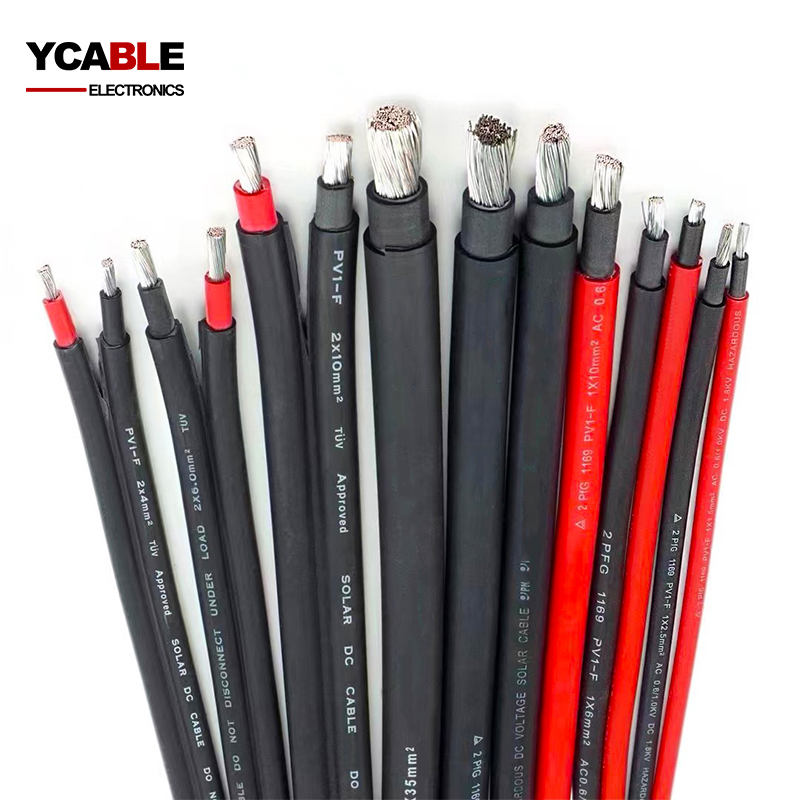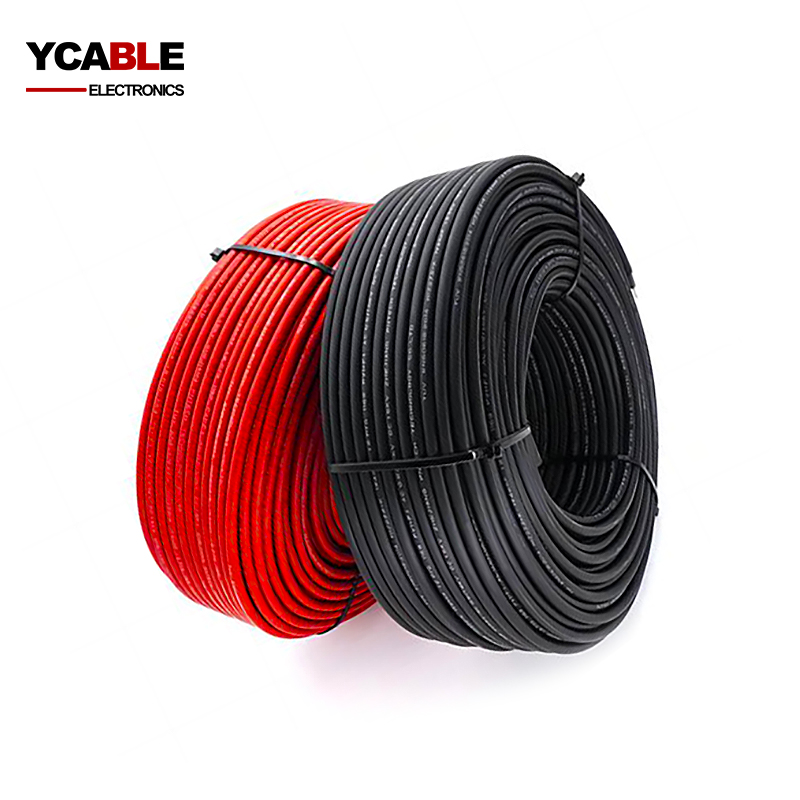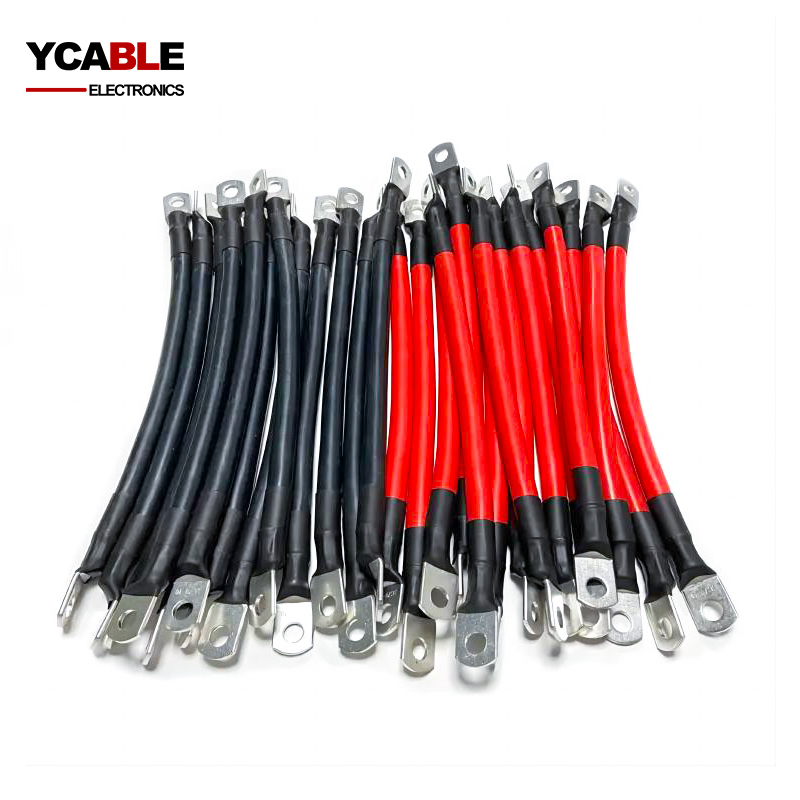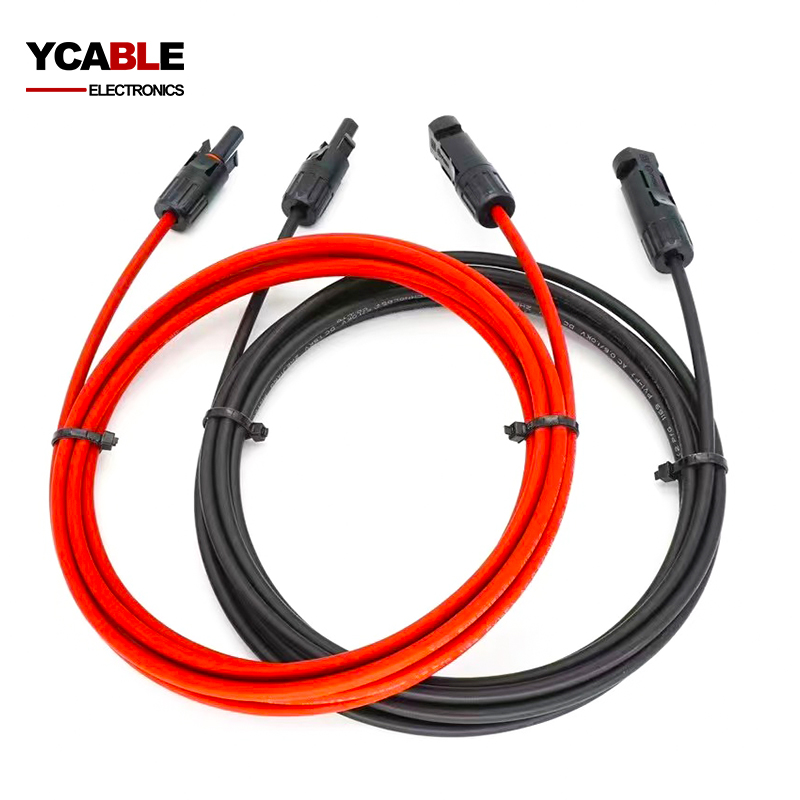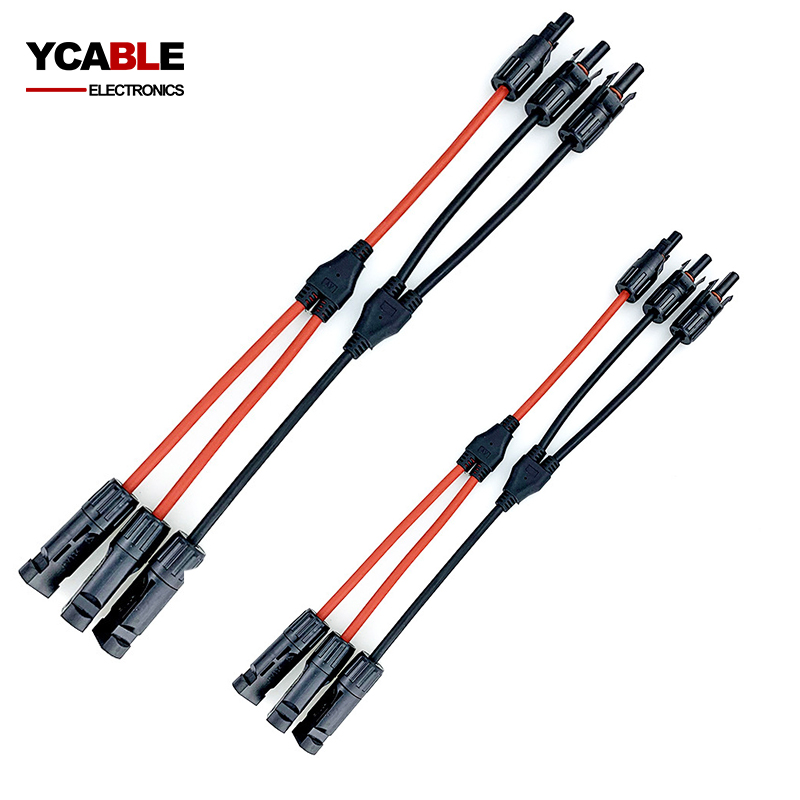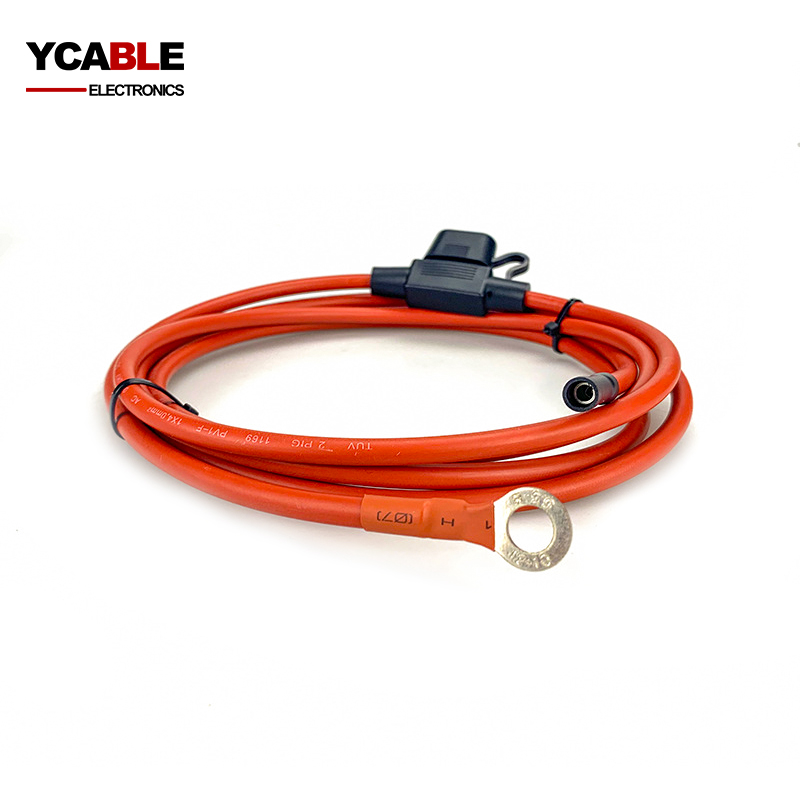What is the solar cable
What is solar cable? What is PV cable?
solar cable, solar wire, solar panel wires also known as PV cable, are cable specifically used to connect solar modules (such as solar panels) and electrical equipment such as inverters. The characteristic of solar system is that it needs to be exposed to the outdoor environment for a long time, so the solar cable needs to be UV resistant, anti-aging, high and low temperature resistant, and harsh environment resistant. The size of the solar power cable can be 6mm solar cable, 4mm solar cable, 10 awg solar panel cable, 8awg solar wire, solar cable 10mm2. there are also armored solar cable wire for solar panels. Solar cables are also divided into solar battery cables and solar trunk cable.
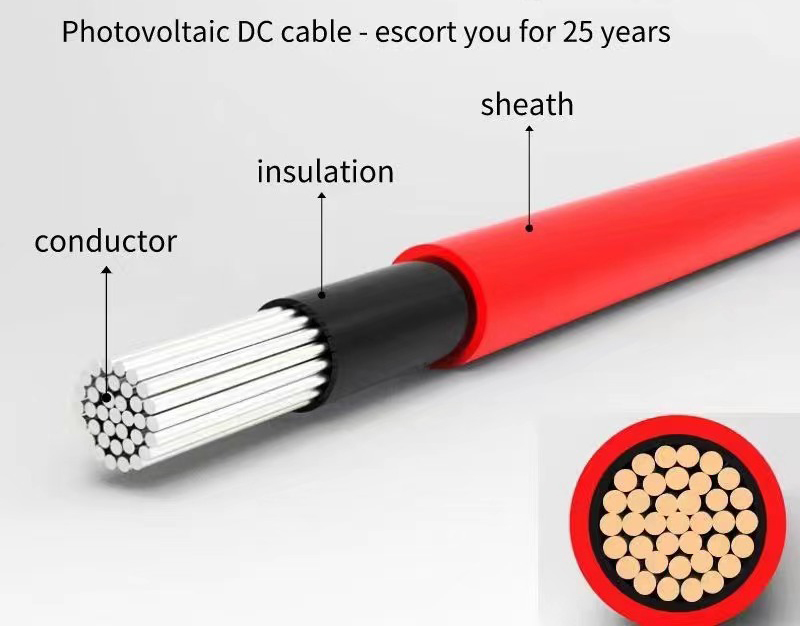
Key Features & Characteristics of Solar cables
-
UV Resistance: Given their outdoor application, solar cables are engineered to resist ultraviolet (UV) rays, ensuring longevity and performance.
-
High Temperature Tolerance: These cables can withstand both high and low temperatures, catering to the various climates in which solar installations may be present.
-
Durable & Robust: Solar cables are designed to be durable, enduring tough weather conditions, from heavy rainfall to snow.
-
Low Energy Loss: To maximize energy efficiency, these cables have a low resistance, ensuring minimal energy loss during transmission.
-
Halogen-Free: Many solar cables are halogen-free, making them more environmentally friendly, as they release minimal toxic gases when exposed to fire.
-
Flexibility: Considering the varied installation requirements of solar setups, solar cables are often designed to be flexible, making the installation process smoother.
The main material of solar pv cable is high quality, high tensile cable, and the outer layer is usually covered with a layer of ultraviolet resistant, anti aging PVC or XLPE sheath. This can ensure that the solar cable is not affected by factors such as ultraviolet radiation, humidity, and climate change during long term outdoor use, and maintains stable electrical performance. YCABLE ELECTRONICS is one of the best solar cable manufacturers in China, we provide you the best wire for solar panels, we also can provide you solar cables and connectors, like MC4 conductors.
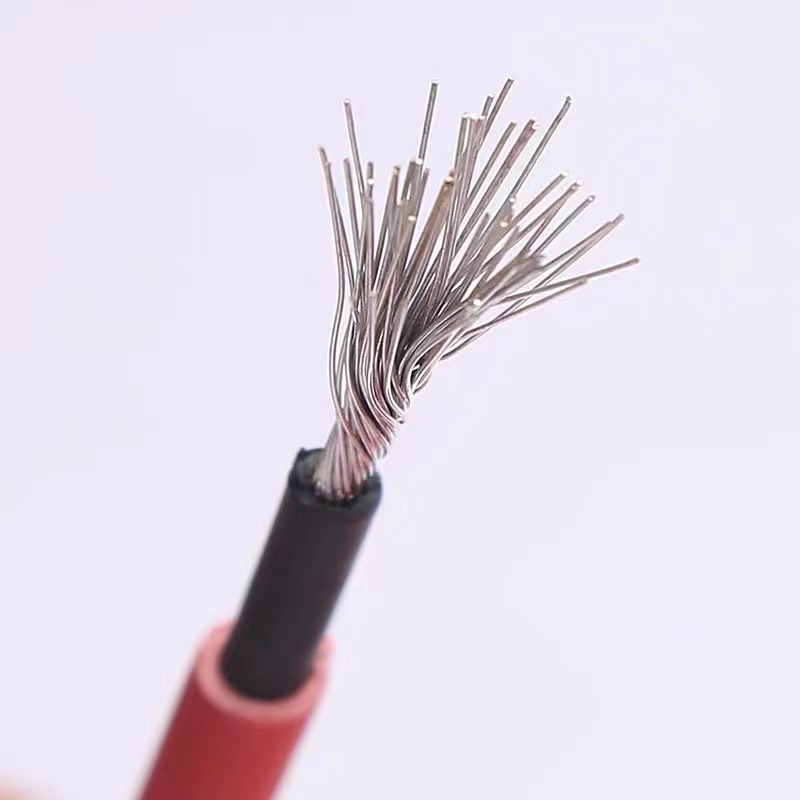
Types of Solar Cables
- Single-Core Cables: These are used to connect solar panels in series.
- Twin-Core Cables: Typically used to connect solar panels to inverters or charge controllers.
- DC Solar Cables: Connect solar panels to solar inverters. They carry direct current (DC) produced by the solar panels.
Can I use AC cable for solar panel? Can I use normal cable for solar panels?
In theory, AC power cable and ordinary cables (such as copper cables) can be used to connect solar panel, but this is not recommended in practice. The particularity of solar system requires that the solar cable should be UV resistant, anti-aging, high and low temperature resistant, and harsh environment resistant. Ordinary power cables and AC cables do not possess these characteristics, so long term exposure to outdoor environments may lead to performance degradation, damage, and other issues, thereby affecting the stability and safety of the entire solar system.
In addition, the insulation materials of ordinary cables and AC cables may not meet the requirements of high voltage and current in solar systems, and are prone to faults such as leakage and short circuits. Therefore, in order to ensure the stable operation of the solar system, it is recommended to use specially designed solar cables for connection. solar cable usually use high-quality, high tensile cable, and the outer layer is wrapped with UV resistant, anti-aging XLPE or polyolefin (good PVC) sheath, which can meet the use requirements of the solar system. By the way, different materials of solar pv cable also have different quality, XLPE material solar cable are more durable than PVC material solar cable, so if we need to choose the better quality of the PV cable, then confirm if it is XLPE solar cable.
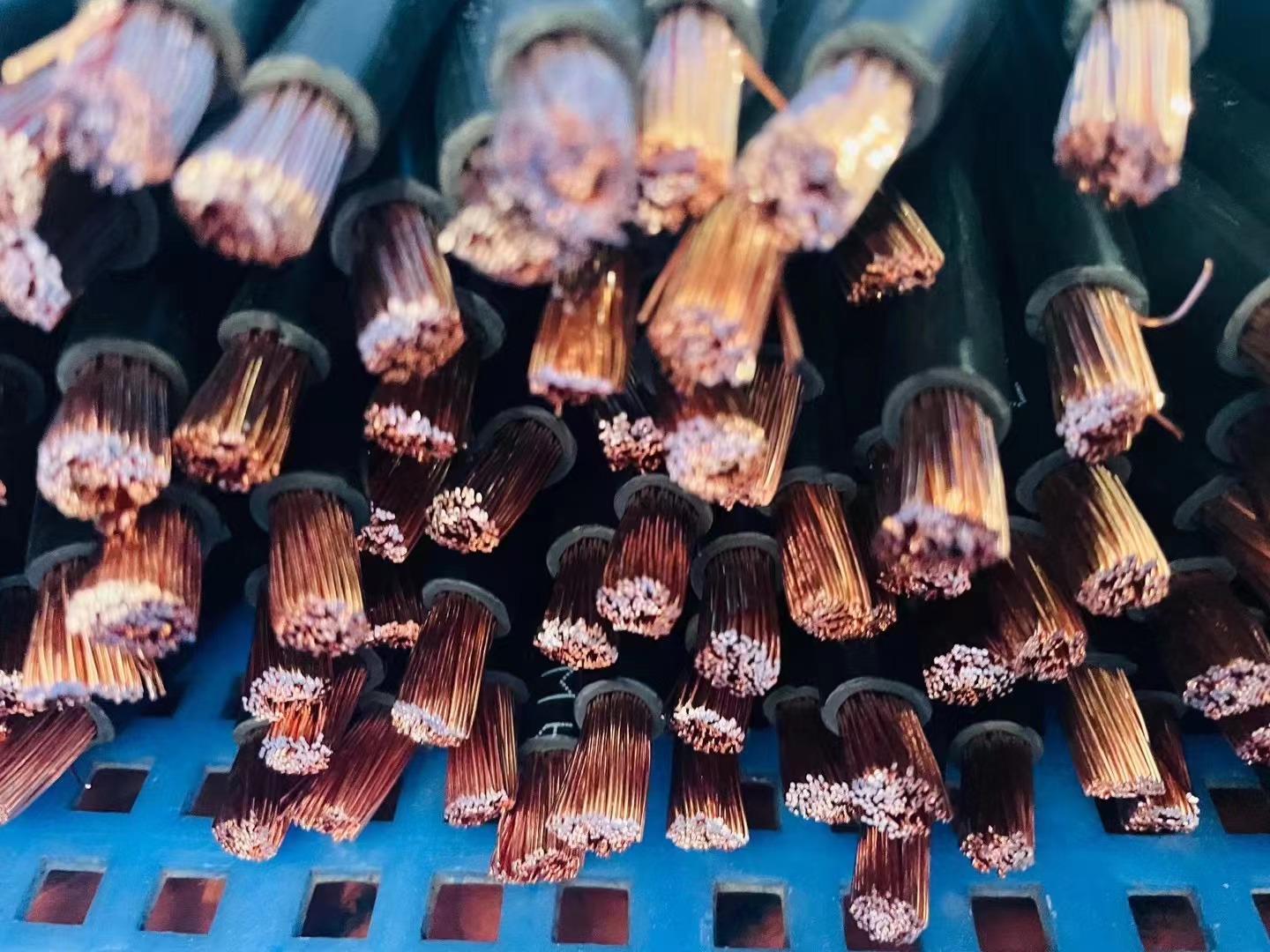
How to cable a solar system to your house?
To connect the solar system to the house, you need to consider the following steps:
- Assess your needs: Firstly, you need to determine the electricity required for the house, including lighting, appliances, heating, and cooling. Then, you can calculate the number and power of solar panels based on these requirements.
- Choose the appropriate solar module: Choose the solar module that suits your needs. These components can be solar panels, solar cells, or other solar devices. Usually, the size, power, and voltage of solar panels are factors that need to be considered.
- Installation of solar panels: Install the solar panels in an appropriate position, usually on the roof or ground facing the sun. Ensure that the distance between solar panels is appropriate for maximum absorption of sunlight.
- Install inverters and electrical equipment: Install inverters to convert direct current into alternating current. Connect the inverter to the electrical system of the house, usually using dedicated cables and connectors.
- Install an electricity meter: Install an electricity meter to record the solar power you generate and the electricity you receive from the grid. This helps you understand your electricity usage and prepare for potential future needs.
- Application for grid connection: Contact the local power company to learn how to connect the solar system to the grid. According to local regulations, you may need to apply for a grid connection permit and obtain approval before connecting the solar system to the grid.
- Maintenance and monitoring: Regularly inspect and maintain the solar system to ensure its normal operation. At the same time, use a monitoring system to track your electricity usage and make necessary adjustments.
How long can solar panel cable be?
The length of the solar cable mainly depends on the distance from the solar panel to the inverter, distribution box, or grid access point. Ideally, the solar cable length should be as short as possible to reduce cable losses and improve system efficiency. However, in practical applications, the length of the solar cable may be limited by factors such as site conditions and building layout.
The lengths of solar panel cable available on the market vary, with common specifications ranging from 1.5 meters, 2.5 meters, 5 meters, 10 meters, etc. According to your needs, you can choose the appropriate solar cable length. If the length of the solar cable you need exceeds the commercial specifications, Ycable Electronics is the solar cable manufacture can help you custom the length of the solar electrical wire. However, it should be noted that excessively long cable may lead to increased cable loss and reduced voltage, thereby reducing the efficiency and performance of the system. Therefore, when selecting solar cable length, the relationship between solar cable length and system efficiency should be balanced.
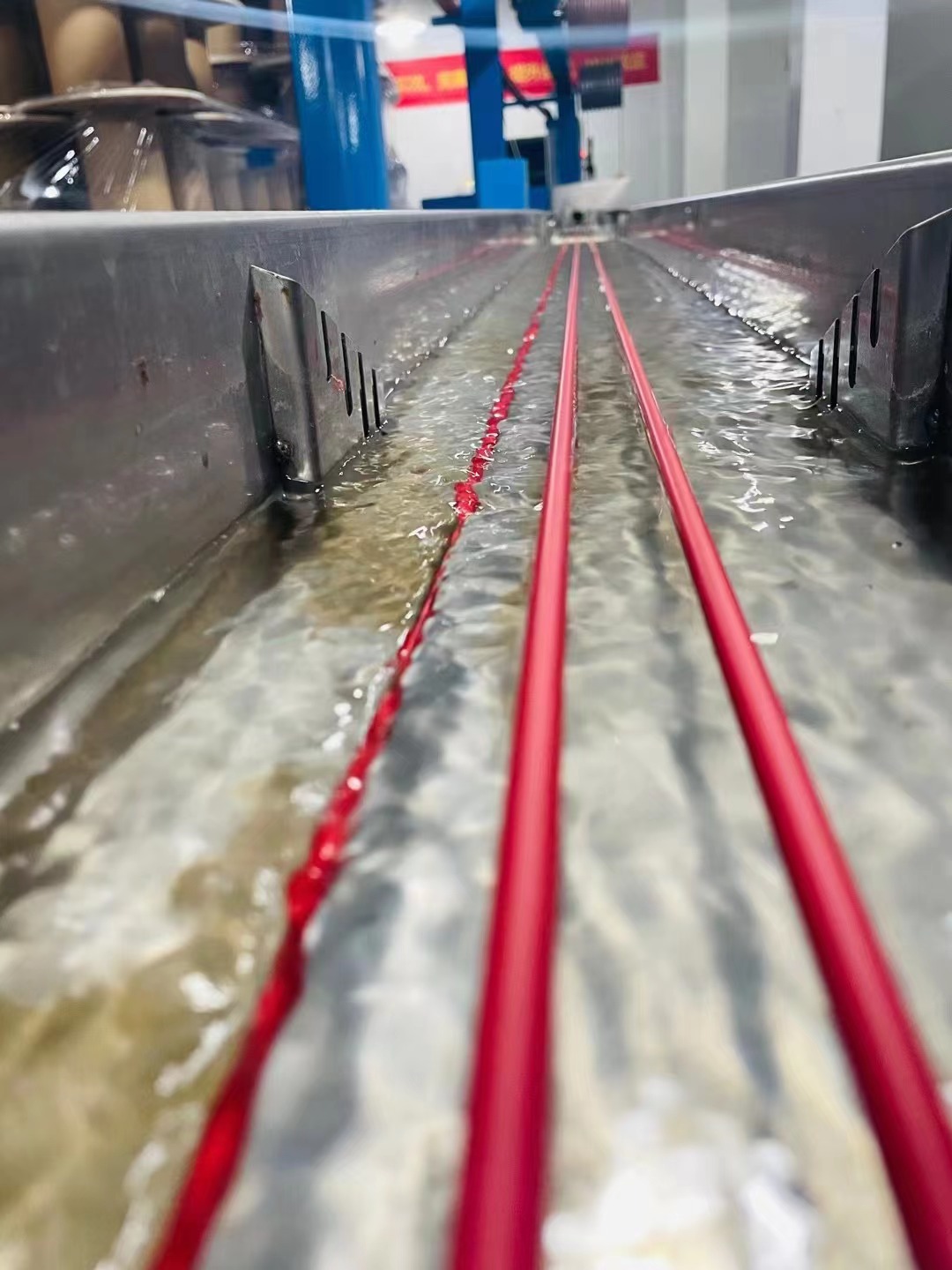
What size cable for 100w solar panel?
-
For a 100 watt solar system, it is recommended to use a 2.5 square millimeter cable. This specification of cable can withstand large currents while having lower cable losses.
What size cable for 200w solar panel?
-
For a 200 watt solar system, it is recommended to use 4mm solar cable.
What size cable for 300w solar panel?
-
For a 300 watt solar system, it is recommended to use 6mm solar cable.
What size cable for 600w solar panel?
-
For a 600 watt solar system, it is recommended to use 10mm solar cable.
How to connect solar panel cables?
The process of connecting solar panel cables includes several steps. Please note that when carrying out any electrical work, it is essential to follow safe operating procedures. The following are the general steps for connecting solar panel cables:
- Prepare tools and materials: Ensure that you have the appropriate tools and materials, such as cable stripping pliers, cable connectors, waterproof tape, cable clamps, etc.
- Determine the positive and negative poles: First, you need to determine the positive and negative poles of the solar panel. Usually, the red cable represents the positive pole, and the black cable represents the negative pole. On the metal border of the battery panel, you may find labels or other markings to help you determine the positive and negative poles.
- cable stripping: Use cable stripping pliers to strip approximately 2.5 centimeters to 5 centimeters of insulation from both ends of the cable. Be careful to avoid damaging the cables inside the cables.
- Connect cables: Connect the positive cable of the battery board to the corresponding positive terminal, and connect the negative cable to the corresponding negative terminal. Ensure that all connections are securely fixed.
- Protective joint: Wrap the cable with waterproof tape or heat shrink tubing at the connection to ensure the safety and waterproofing of the joint.
- Check connections: Before continuing with installation, carefully check all connections to ensure they are securely fixed and there are no exposed cables.
- Install solar panels: Install the connected solar panels onto the bracket and ensure that they are at the appropriate angle to maximize sunlight absorption.
- Connect the inverter: Connect the solar panel output cable to the inverter. Normally, inverters will have dedicated wiring terminals labeled with positive and negative poles and ground cables.
- Check the system: After completing the installation, check the entire solar system to ensure that all connections are properly connected and there are no exposed cables. If necessary, please consult a professional for inspection.
- Start the system: After ensuring everything is ready, turn on the inverter power and start the solar system. Monitor the operation of the system to ensure its normal operation in generating and transmitting electricity to the grid.
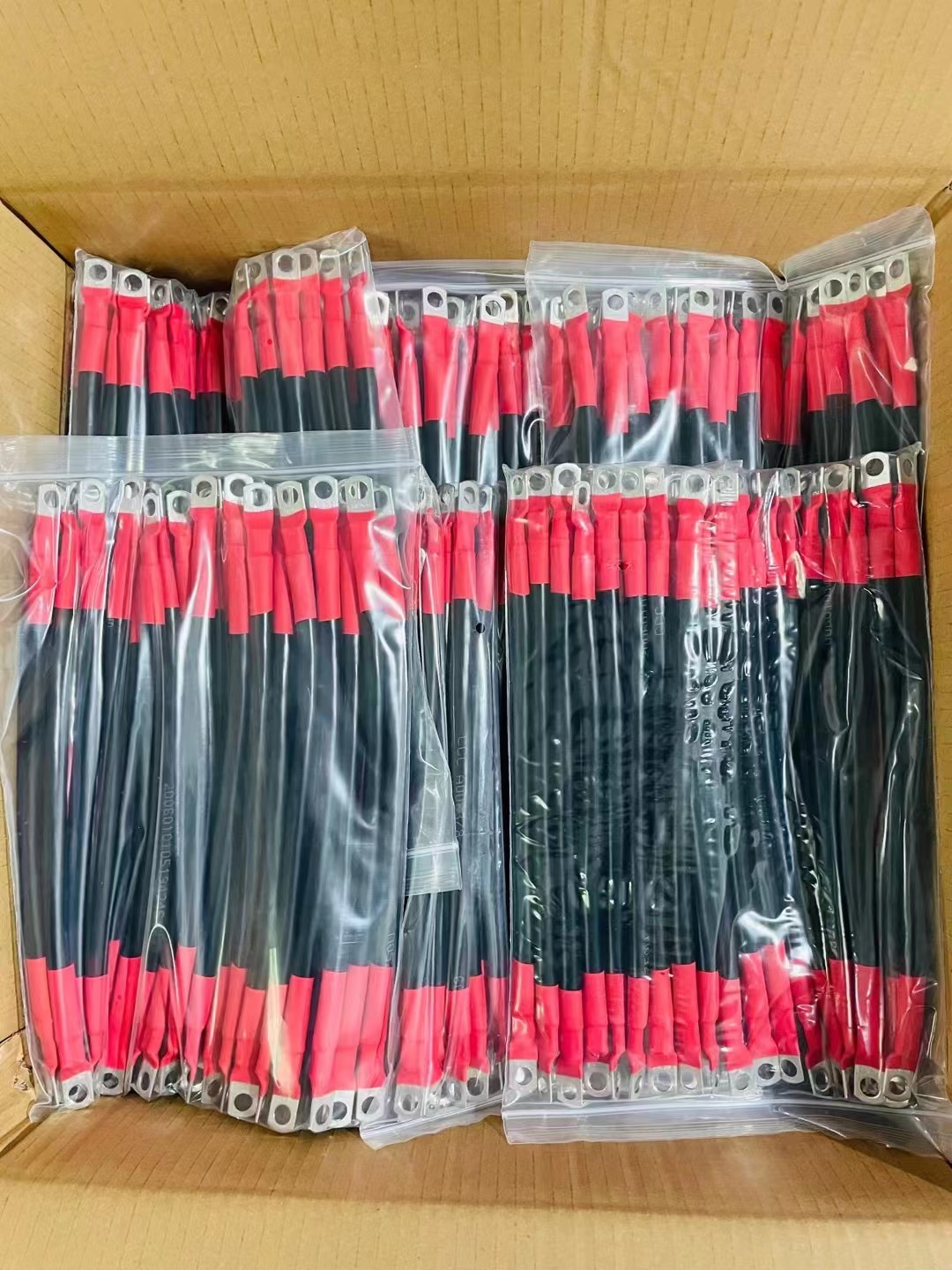
The assembly of solar panel cable connectors requires following certain steps to ensure safe and reliable connection. The following are the general assembly steps, which may vary depending on the connector and equipment. When carrying out any electrical work, be sure to follow the safety operating procedures.
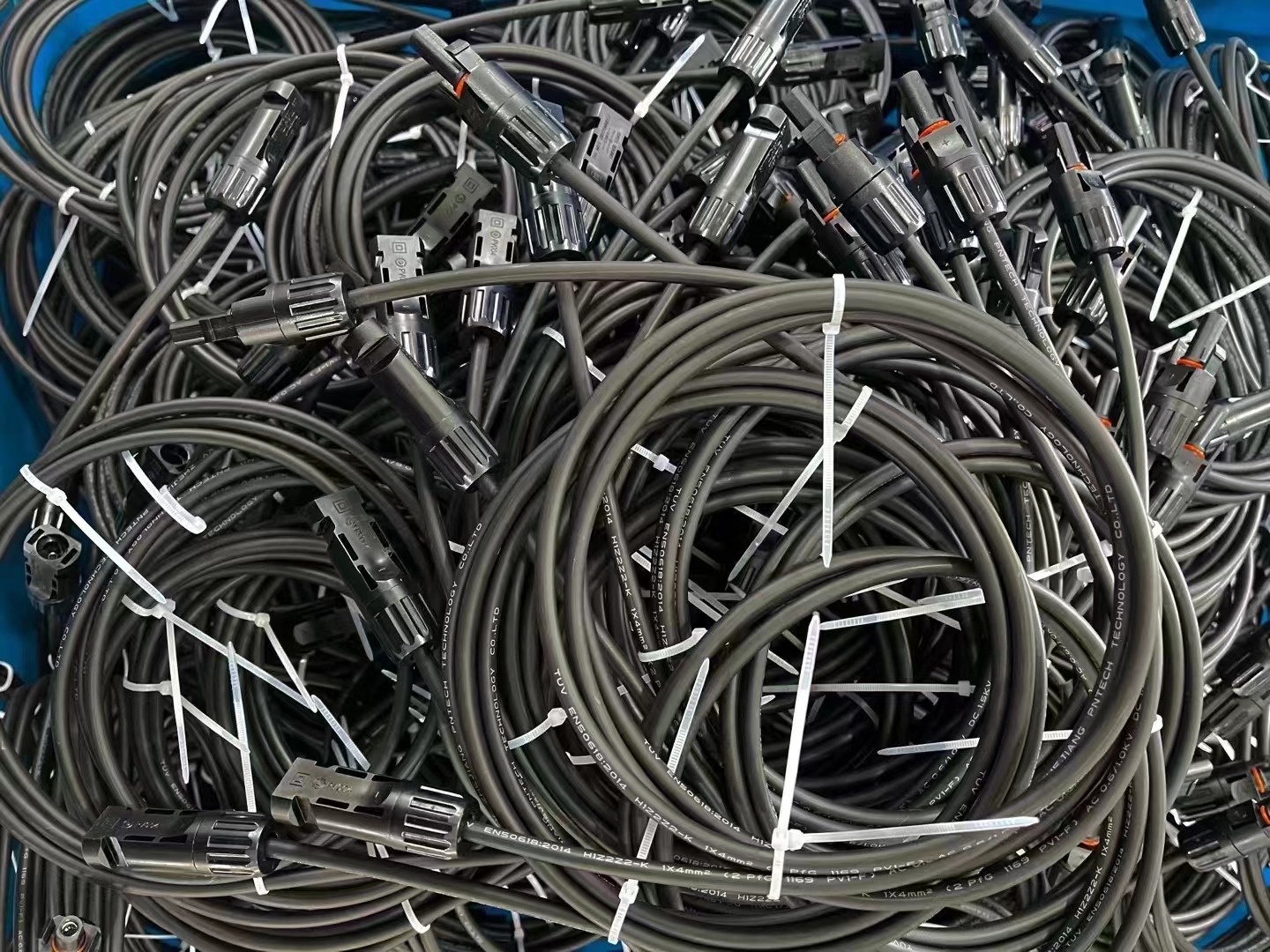
What is the solar panel extension cable?
Solar Panel Extension Cable: An Overview
A solar panel extension cable is designed to extend the length of the standard cables that come attached to solar panels. They play an essential role when the distance between the solar panels and the solar charge controller, inverter, or other components of a solar energy system, exceeds the length of the panel's built-in cables.
Key Characteristics for Solar Extension Cable.
-
Connectors: These cables typically come with MC4 connectors (the standard for solar panel connections) already attached. The male and female connectors make it easier to connect and extend existing panel cables.
-
UV Resistance: Being exposed to the elements, these cables are built to resist the harmful effects of ultraviolet (UV) radiation.
-
High Temperature and Weather Resistance: Whether it's a scorching summer day or a freezing winter morning, these cables are designed to withstand extreme temperatures. They're also water and weather-resistant.
-
Flexibility: Given the various installation scenarios, solar panel extension cables are designed to be flexible for easy routing.
-
Low Energy Loss: These cables are constructed to ensure minimal energy loss during the transmission of electricity.
Common Uses of Solar Extension Cable
-
Distance Bridging: If your solar charge controller, inverter, or battery bank is positioned some distance away from the panels, extension cables are employed to bridge this gap.
-
Panel Array Configurations: In larger installations, where panels are spread out or organized in arrays, extension cables help manage connections more efficiently.
-
Safety and Cleanliness: They also assist in keeping the setup neat, organized, and free from cable clutter, ensuring a safer environment.
When sourcing or providing solar panel extension cables in the B2B market, quality is of paramount importance. Factors such as conductivity, durability, and the quality of connectors can greatly affect the overall performance and lifespan of a solar installation.
If businesses venture deeper into the solar accessory domain, they could consider collaborating with experienced solar cable manufacturers with a diverse portfolio, including other wiring solutions, to cater to broader market demands.
To wrap it up, as the adoption of solar energy continues to soar, accessories like solar panel extension cables play an instrumental role in making installations versatile, efficient, and durable. Whether you're extending your reach towards the sun or any other domain, may your connections always be strong and efficient!
how long is the cable on the ring solar panel?
The Solar Panel is designed to power security cameras, ensuring they remain charged without the need for regular battery replacements. the Solar Panel typically comes with a 13-foot (about 4 meters) cable. This length is intended to offer flexibility in positioning the solar panel to receive optimal sunlight while staying relatively close to the Ring device it powers. However, product designs and specifications can change over time. To get the most up-to-date and accurate information, it's always a good idea to check the product specifications on our official website or contact our customer service directly. If you're in the B2B domain considering such products, understanding such specifications becomes crucial for planning installations or offering complementary services. Whether it's working with solar panel connectors, ensuring compatibility and understanding length requirements can significantly impact installation efficiency and customer satisfaction.

